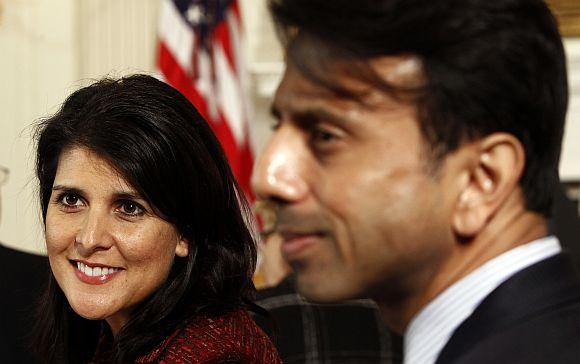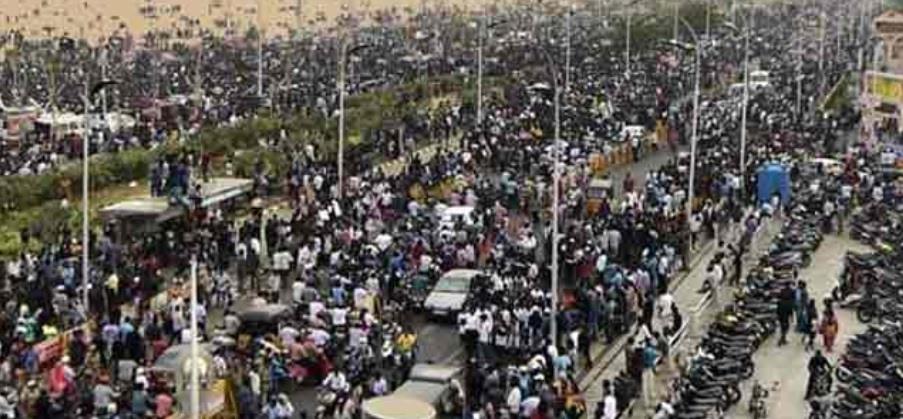June 26, 2017
WASHINGTON, D.C. — The Supreme Court agreed Monday to let President Trump's immigration travel ban go into effect for some travelers, reversing the actions of lower federal courts that had put the controversial policy completely on hold.

June 26, 2017
WASHINGTON, D.C. — The Supreme Court agreed Monday to let President Trump's immigration travel ban go into effect for some travelers, reversing the actions of lower federal courts that had put the controversial policy completely on hold.

The court also agreed to hear the case involving travelers from six predominantly Muslim countries and all refugees in the early fall, leaving open the chance that it could reverse Monday's verdict if challengers can prove the ban is illegal or unconstitutional.
The justices' action gives Trump a partial victory following a string of defeats from coast to coast, and he wasted no time applauding it.
"Today's unanimous Supreme Court decision is a clear victory for our national security," Trump said in a statement. "It allows the travel suspension for the six terror-prone countries and the refugee suspension to become largely effective."
That was immediately contested by immigrant rights and civil liberties groups challenging the travel ban, who argued that most would-be travelers cannot be barred under the court's compromise ruling. "The hope is that this really only impacts a very small number of people,” said Becca Heller, director of the International Refugee Assistance Project.
Until Monday, the travel ban had been under siege in federal courts. Some struck it down as a form of religious discrimination against Muslims. Others said it showed bias based on nationality and exceeded the president's authority without a firm national security justification.
The high court's action, therefore, represents at least a minor setback for immigration rights and civil liberties groups that had bottled up two executive orders through legal action, exacerbating the president's battles with federal courts that began during the election campaign.
The revised travel ban, issued in March, blocks most new immigrants from six predominantly Muslim countries for 90 days and all refugees for 120 days. As a result of the high court's action, the ban can be implemented for some travelers, along with a long-delayed review of vetting procedures used to screen foreigners trying to enter the United States.
Since he signed the first executive order Jan. 27, Trump has pitched the travel ban as a temporary anti-terrorism policy needed to give the government time to review and improve screening procedures, both worldwide and for the particular countries in question: Iran, Libya, Somalia, Sudan, Syria and Yemen.
The court's action was written without an author, but with a partial dissent from Justices Clarence Thomas, Samuel Alito and Neil Gorsuch, who would have allowed the ban to apply to all travelers.
"The government's interest in enforcing (the ban), and the executive's authority to do so, are undoubtedly at their peak when there is no tie between the foreign national and the United States," the court said.
On the other hand, it said the ban "may not be enforced against foreign nationals who have a credible claim of a bona fide relationship with a person or entity in the United States."
The action isn't expected to set off the kind of chaos seen around the world when Trump signed the first travel ban into effect on Jan. 27. That executive order, which went into effect immediately, barred all travelers from seven countries from entering the U.S. even if they had green cards, valid visas or refugee status. It led to at least 746 people temporarily detained at U.S. airports, some being deported back to their home countries, and untold numbers of others prevented from boarding their flights at airports overseas.
The revised travel ban, with the court's limitations, now can go into effect this week, based on a memorandum recently signed by the president. It allows travelers with green cards and visas to continue entering the U.S., but still forbids all refugees. That means some refugees may get stuck, but nowhere near the number of people ensnared by the first ban.
The travel ban originally was proposed as a way to free resources for the review of screening procedures, but the two were separated by the most recent federal appeals court ruling that allowed only the review to go forward. That created the possibility that the review could be completed before the Supreme Court heard arguments in the travel ban case, rendering the dispute moot.
Because visa and green card holders were included in the first ban, it immediately produced confusion and protests at U.S. airports. Within days, federal judges in New York and Boston intervened, and a third federal judge in Seattle issued a nationwide injunction in early February.
Trump unveiled a revised order in March that smoothed out some of the original ban's rougher edges. It called for a 90-day ban on travelers from six countries and 120 days for refugees, but it excluded visa and green card holders, deleted a section that gave preference to Christian minorities, and included a waiver process for those claiming undue hardship.
That order was blocked by a federal judge in Hawaii hours before it was to go into effect on March 16, as well as by another federal judge in Maryland. The Justice Department appealed both rulings, leading to similar slap-downs by federal appeals courts in Richmond May 25 and San Francisco June 12.
As it reached the Supreme Court, the travel ban had been struck down on both constitutional and statutory grounds. The U.S. Court of Appeals for the 4th Circuit ruled 10-3 that it discriminated against Muslims by targeting only countries with overwhelmingly large Muslim majorities. But a three-judge panel of the U.S. Court of Appeals for the 9th Circuit ruled unanimously that the ban violated federal immigration law by targeting people from certain countries without improving national security.
Through all the defeats, Trump was forced to play on what amounts to his opponents' home turf: The 9th Circuit, based in San Francisco, is dominated by President Bill Clinton's nominees. The 4th Circuit, based in Richmond, is dominated by President Barack Obama's nominees. All 13 judges on those two courts who voted to strike down the revised travel ban were appointed by Democratic presidents.
By contrast, the Supreme Court includes five justices named by Republican presidents and four by Democrats. Chief Justice John Roberts is a strong proponent of executive authority, particularly in foreign affairs. Alito has spent his entire career working for the government. Justice Anthony Kennedy wrote in a 2015 immigration case that a "legitimate and bona fide" reason for denying entry to the United States can pass muster. Gorsuch is a stickler for the written text of statutes — and banning Muslims isn't mentioned in Trump's executive order. Thomas is the most conservative of all.
Despite those advantages, Trump at times has been his own worst enemy. His presidential campaign speeches, official statements and tweets gave opponents of the ban fodder for their challenges — from Trump's vow in 2015 to seek "a total and complete shutdown of Muslims entering the United States" to his lament this month that his lawyers should have pushed for a "much tougher version" rather than the "politically correct" order he signed in March.
Courtesy/Source: USA Today















































































































